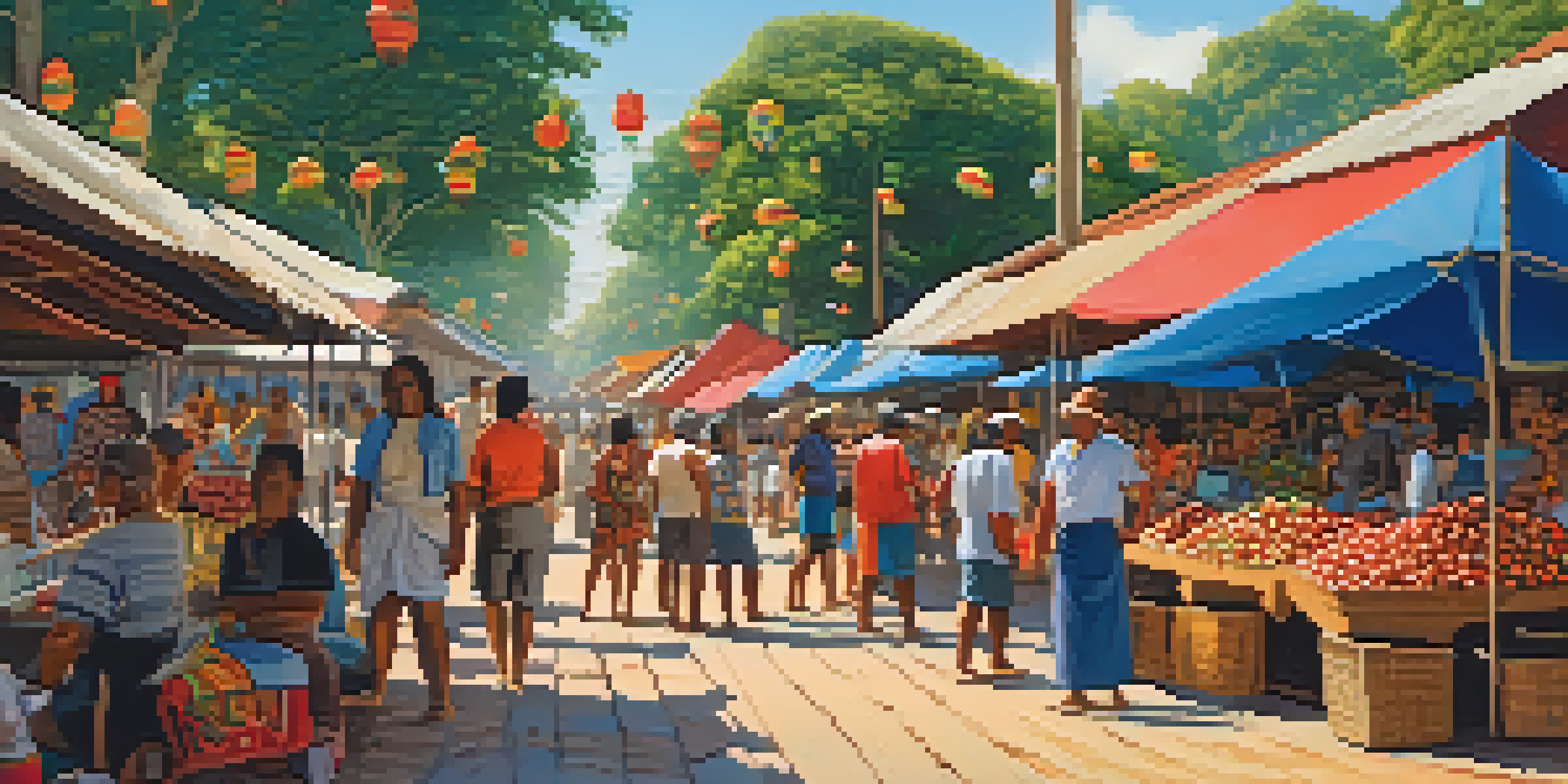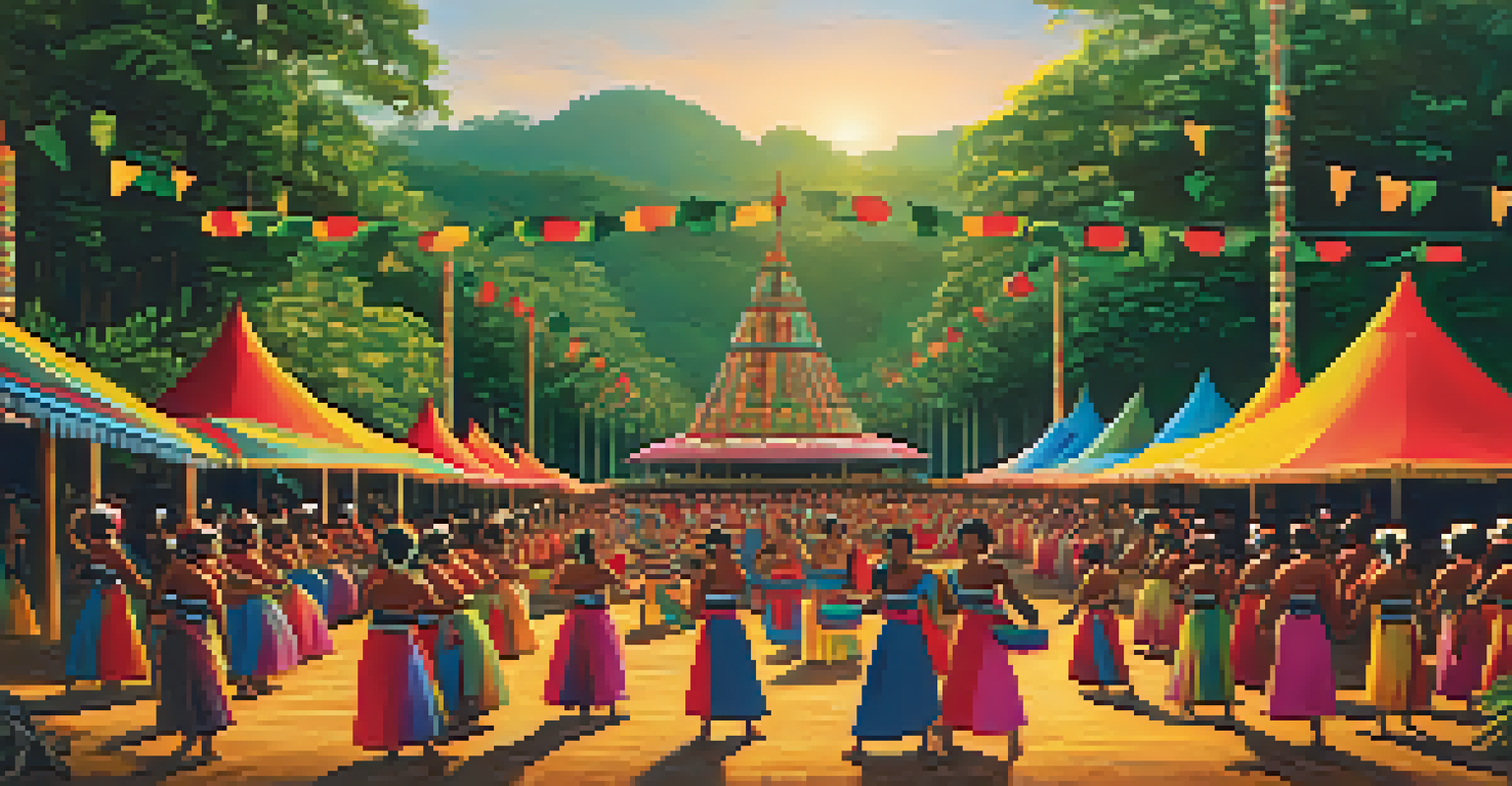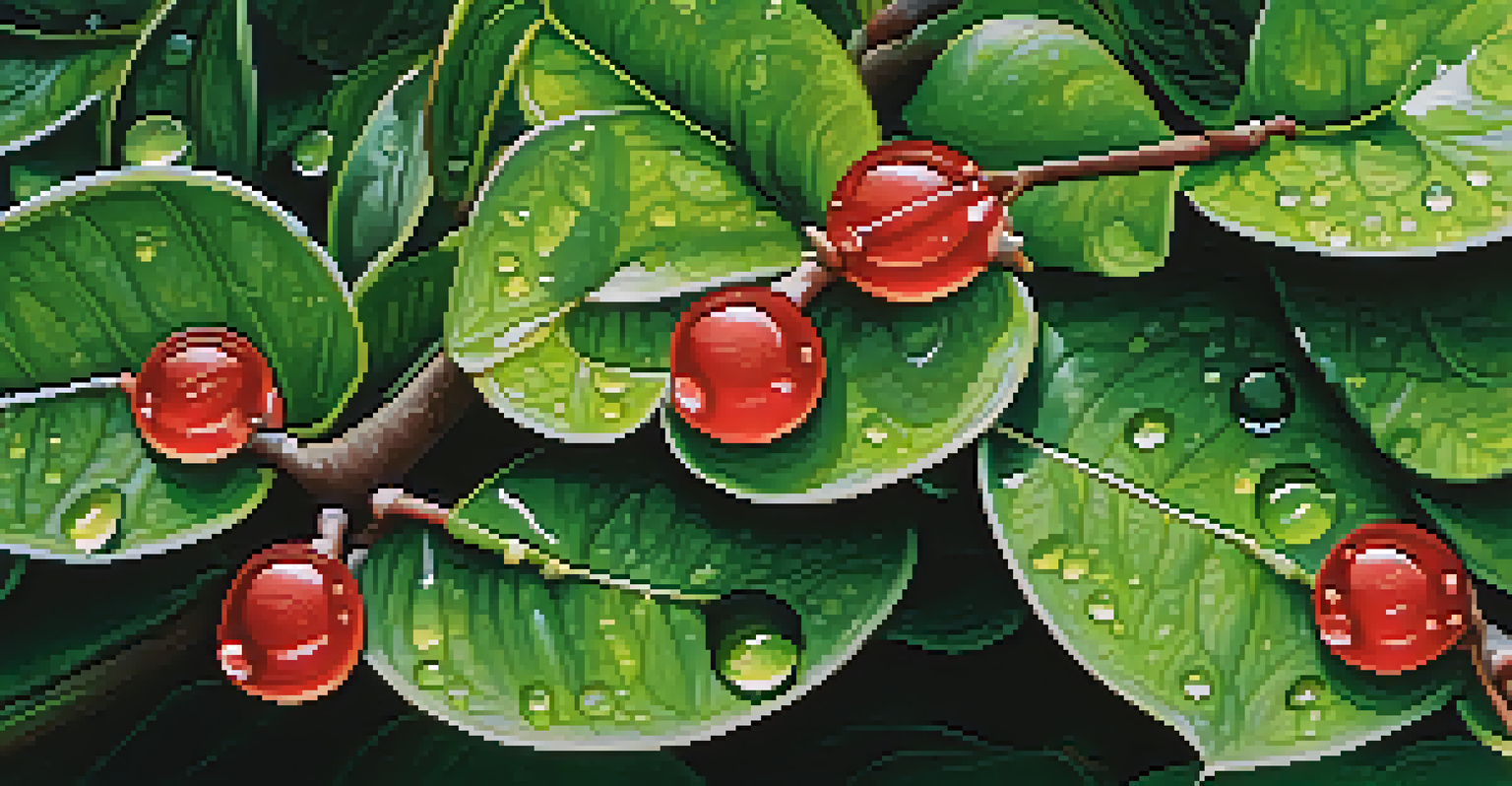The Myth of the Guaraná Plant in Brazilian Indigenous Culture

Understanding the Guaraná Plant's Origins and Uses
Guaraná, a climbing plant native to the Amazon, holds a special place in Brazilian Indigenous culture. Traditionally, the seeds of this plant are known for their stimulating properties, often used to create a popular beverage. Indigenous tribes, such as the Sateré-Mawé, have cultivated Guaraná for centuries, integrating it deeply into their rituals and daily life.
The land is sacred. It is not ours; it is a sacred trust that we hold for future generations.
The seeds are not just valued for their caffeine content; they are seen as a gift from the gods. This belief adds a layer of sacredness to the plant, making it much more than a mere source of energy. It embodies a connection to the earth and the spiritual world, which is central to Indigenous identity.
Moreover, Guaraná is often associated with community and sharing. When preparing the drink from its seeds, tribes gather together, reinforcing social bonds and cultural traditions. This communal aspect highlights how the plant transcends its physical benefits and becomes a symbol of unity.
The Mythical Origins of Guaraná in Indigenous Lore
The Guaraná plant is steeped in rich mythology, with various stories explaining its origins. One popular tale tells of a young hero who sacrificed himself to create the plant, ensuring that his people would have a source of strength and vitality. This narrative not only explains the plant's existence but also reinforces the values of bravery and selflessness within the culture.

These myths often feature elements of nature and spirituality, illustrating how Indigenous peoples view the world. They see the Guaraná plant as part of a larger ecosystem, where every being has a purpose and a story. This interconnectedness fosters respect for the natural world and its resources.
Cultural Roots of Guaraná
Guaraná is deeply integrated into Indigenous culture, symbolizing community, spirituality, and connection to nature.
In essence, the myths surrounding Guaraná serve as moral lessons, teaching the community about resilience and the importance of caring for one another. They remind us that every plant, every tree, has its own tale, contributing to the rich tapestry of life.
Guaraná's Role in Traditional Healing Practices
Beyond its cultural significance, Guaraná has been used in traditional healing practices for generations. Indigenous healers often incorporate the plant into remedies, believing it possesses properties that can enhance physical and mental health. For example, it is thought to improve focus and alleviate fatigue, making it a prized element in their pharmacopoeia.
We do not inherit the earth from our ancestors; we borrow it from our children.
In many ways, Guaraná is viewed as a bridge between the physical and spiritual realms. Its consumption is often accompanied by rituals that honor the spirits of the forest, reinforcing the belief that healing is not just a biological process but a holistic one. This perspective encourages a deep respect for both the plant and the knowledge passed down through generations.
Thus, Guaraná serves as a vital component of Indigenous medicine, illustrating how traditional practices are intertwined with cultural beliefs. It stands as a testament to the wisdom of Indigenous peoples and their unique understanding of health and wellness.
Guaraná in Modern Brazilian Society
As Brazil modernizes, Guaraná has found its way into contemporary culture, especially through soft drinks and energy products. Its popularity has skyrocketed, with many people recognizing its energizing effects and unique flavor. This shift showcases how traditional ingredients can adapt and thrive in a modern marketplace.
However, this commercialization has stirred conversations about cultural appropriation and the importance of honoring Indigenous practices. As Guaraná becomes a global phenomenon, it's crucial to acknowledge and respect its roots. Many Indigenous groups are advocating for fair representation and compensation for their knowledge and resources.
Healing and Wellness Practices
Indigenous healers use Guaraná in traditional remedies, viewing it as a bridge between physical health and spiritual wellness.
This balance between modernization and tradition is delicate, reminding us of the need to preserve cultural heritage while embracing innovation. It invites consumers to reflect on the stories behind what they consume and the communities that sustain these practices.
The Environmental Significance of Guaraná Cultivation
Guaraná cultivation is also closely linked to environmental stewardship among Indigenous peoples. Their traditional farming methods often emphasize sustainability, ensuring that the land remains fertile and productive for future generations. By practicing agroforestry, they cultivate Guaraná alongside other plants, promoting biodiversity and ecosystem health.
This approach contrasts sharply with industrial farming techniques that can degrade the environment and threaten local flora and fauna. Indigenous practices prioritize harmony with nature, showcasing how traditional knowledge can offer solutions to contemporary environmental challenges.
Thus, Guaraná is not just a plant; it's a symbol of a way of life that values sustainability and respect for the earth. By supporting Indigenous cultivation methods, we can contribute to preserving both the environment and cultural heritage.
Challenges Facing Indigenous Cultures and Guaraná
Despite its rich history and significance, Indigenous cultures face numerous challenges in preserving their traditions related to Guaraná. Encroachment of urban development, deforestation, and climate change threaten both the plant and the lifestyles of those who rely on it. These pressures highlight the urgent need for advocacy and support for Indigenous rights.
Moreover, as Guaraná gains global popularity, it opens up discussions about ownership and intellectual property. Indigenous communities often struggle to ensure that their knowledge and resources are respected and compensated fairly. Navigating these complexities requires collaboration and understanding from all parties involved.
Modern Challenges and Advocacy
As Guaraná gains global popularity, Indigenous cultures face challenges related to cultural appropriation and environmental threats.
By raising awareness of these challenges, we can help amplify Indigenous voices and promote sustainable practices that honor their heritage. Supporting ethical sourcing and fair trade initiatives can make a real difference in preserving the cultural significance of Guaraná.
Celebrating Guaraná: Festivals and Cultural Events
In Brazil, festivals celebrating Guaraná serve as vibrant expressions of Indigenous culture and community. These events often feature traditional music, dance, and food, creating a space for cultural exchange and awareness. Participants come together to honor the Guaraná plant and its vital role in their lives.
Such festivals not only celebrate the plant but also educate the public about its importance in Indigenous culture. They offer an opportunity for non-Indigenous people to learn about the traditions, stories, and challenges faced by these communities. This cultural exchange fosters respect and appreciation for the rich tapestry of Brazilian heritage.

Ultimately, celebrating Guaraná through festivals reinforces the idea that culture is alive and dynamic. It invites everyone to participate in a shared appreciation of nature, community, and history, bridging gaps between diverse cultures.